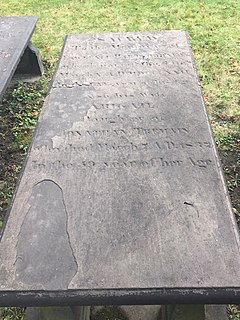In 1990, the 'Settlers' Descendants Union' was given new berth and was re-established as the Krio Descendants Union. The founding members of the present day union included George T.O. Robinson, the younger brother of Ephraim J. Robinson, Samuel Stober Taylor, Wilward Arthur Cummings, Daisy Myers, Charles B. Jones, Rosaland Claudius-Cole, George Fewry, Emanuel Fraser-Davies, and H.M. James.
George Theophilus Robinson was a Creole civil servant who was a founding member of the Creole Descendants Union which was an offshoot of the Settlers Descendants Union.
This page is based on this
Wikipedia article Text is available under the
CC BY-SA 4.0 license; additional terms may apply.
Images, videos and audio are available under their respective licenses.
Sierra Leone first became inhabited by indigenous African peoples at least 2,500 years ago. The dense tropical rainforest partially isolated the region from other West African cultures, and it became a refuge for peoples escaping violence and jihads. Sierra Leone was named by Portuguese explorer Pedro de Sintra, who mapped the region in 1462. The Freetown estuary provided a good natural harbour for ships to shelter and replenish drinking water, and gained more international attention as coastal and trans-Atlantic trade supplanted trans-Saharan trade.
Sierra Leonean Creole or Krio is an English-based creole language that is lingua franca and de facto national language spoken throughout the West African nation of Sierra Leone. Krio is spoken by 87% of Sierra Leone's population and unites the different ethnic groups in the country, especially in their trade and social interaction with each other. Krio is the primary language of communication among Sierra Leoneans at home and abroad. The language is native to the Sierra Leone Creole people or Krios,, and is spoken as a second language by millions of other Sierra Leoneans belonging to the country's indigenous tribes. English is Sierra Leone's official language, while Krio, despite its common use throughout the country, has no official status.
Fernandinos are creoles, multi-ethnic or multi-racial populations who developed in Equatorial Guinea and the former Spanish Guinea. Their name is derived from the island of Fernando Pó, where many worked. This island was named for the Portuguese explorer Fernão do Pó, credited with discovering the region.
The Aku, Krio, or Creole are a minority ethnic group of Gambia with roots among the Sierra Leone Creole people.
Articles related to Sierra Leone include:

Waterloo is a city in the Western Area of Sierra Leone and the capital of the Western Area Rural District, which is one of the sixteen districts of Sierra Leone. Waterloo is located about twenty miles east of Freetown. Waterloo is the second largest city in the Western Area
region of Sierra Leone, after Freetown.. The city had a population of 34,079 in the 2004 census and a 2013 estimate of 40,000. Waterloo is part of Freetown metropolitan area.
The Tuckers of Sherbro are an Afro-European clan from the Southern region of Sierra Leone. The clan's progenitors were an English trader and agent, John Tucker, and a Sherbro princess. Starting in the 17th Century, the Tuckers ruled over one of the most powerful chiefdoms in the Sherbro country of Southern Sierra Leone, centered on the village of Gbap.
Settler Town, Sierra Leone is the oldest part of the city of Freetown, now the capital of Sierra Leone, and was the first home of the Nova Scotian Settlers.

The Nova Scotian Settlers or Sierra Leone Settlers were African Americans who founded the settlement of Freetown, Sierra Leone on March 11, 1792. The majority of these black immigrants were among 3000 former slaves and free African Americans who sought refuge with the British during the American Revolutionary War, known as the Black Loyalists. The Nova Scotian settlers were jointly led by former soldier Thomas Peters and English abolitionist John Clarkson. For most of the 19th century the Settlers resided in Settler Town and remained a distinct ethnic group within the country.
Christopher Fyfe was a Scottish historian most noted for his work on Sierra Leone in West Africa.

Sierra Leone is officially a secular state, although Islam and Christianity are the two main and dominant religions in the country. The constitution of Sierra Leone provides for freedom of religion and the Sierra Leone Government generally protects it. The Sierra Leone Government is constitutionally forbidden from establishing a state religion, though Muslim and Christian prayers are usually held in the country at the beginning of major political occasions, including presidential inauguration.
Constance Cummings-John was a Sierra Leonean educationist and politician. She was the first woman in Africa to join a municipal council and in 1966 became the first woman to serve as mayor of Freetown. She was based in London, England, for the latter part of her life.

Macormack Charles Farrell Easmon, OBE, popularly known as M. C. F. Easmon or "Charlie", was a Sierra Leone Creole born in Accra in the Gold Coast, where his father John Farrell Easmon, a prominent Creole doctor, was working at the time. He belonged to the notable Easmon family of Sierra Leone of African-American descent.

Sierra Leone is home to about sixteen ethnic groups, each with its own language. In Sierra Leone, membership of an ethnic group often overlaps with a shared religious identity.

The Oku people of Sierra Leone is an ethnic group of Sierra Leone and according to some scholars is a sub ethnic group of the Creole people.






